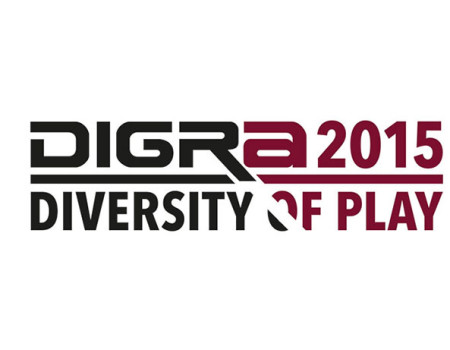 This year’s DiGRA was quite impressive. It was double the size of DiGRA 2014, with three days and six streams spread across two buildings on the beautiful Leuphana University campus in Luneburg. Concordia was well represented, despite the distance. Professors Mia Consalvo, Jonathan Lessard and David Waddington presented, as well as graduate students Rainforest Scully-Blaker, Emily Sheepy, Tom Fennewald, Leif Penzendorfer (co-authoring with Adam Van Sertima) and former post-doc Rob Gallagher and Jennifer Whitson. I gave two presentations, one co-authored with Mia and another which I started with Michael Mateas and Dylan Lederle-Ensign at UCSC last Fall.
This year’s DiGRA was quite impressive. It was double the size of DiGRA 2014, with three days and six streams spread across two buildings on the beautiful Leuphana University campus in Luneburg. Concordia was well represented, despite the distance. Professors Mia Consalvo, Jonathan Lessard and David Waddington presented, as well as graduate students Rainforest Scully-Blaker, Emily Sheepy, Tom Fennewald, Leif Penzendorfer (co-authoring with Adam Van Sertima) and former post-doc Rob Gallagher and Jennifer Whitson. I gave two presentations, one co-authored with Mia and another which I started with Michael Mateas and Dylan Lederle-Ensign at UCSC last Fall.
My first talk was about critical code studies as it might relate to game studies. Using Jason Rohrer’s Passage as a case study, we looked at methods of close analysis and spliced them. In particular, we drew from Samuels and McGann’s concept of deformance, producing alternative versions of Passage by altering its code and interpreting the results.
My second talk was about Dota 2, disability studies and game design. Here, Mia and I looked at ways in which able bodies are assumed and the ways in which disabled bodies are constructed by the mechanics of Dota 2. One particular example is the positive feedback loops in Dota 2 which makes early simple mistakes bigger and bigger until players become scape goats.
As usual, there were #GamerGate problems, but as far as I know, nothing we couldn’t handle. I gave a brief report on the state of students as co-student representative. I also met up with the diversity workgroup, run by Alyea Sandovar, in which we discussed potential strategies for promoting the inclusion and acceptance of less privileged applicants. I, along with Tommy Rousse, ran a reading group in honour of the late Greg Lastowka, to which a healthy number of participants attended.
Luneburg itself is a lovely little hamlet with lots of 400 year old brick buildings and a bar (Malzer Brauhaus) with a special kind of magnetism which repeatedly drew presenters at the conference.
Following DiGRA, I took some time to visit Hamburg to meet up with some local indies (Osmotic Studios) making a game about governments spying on their citizens.
